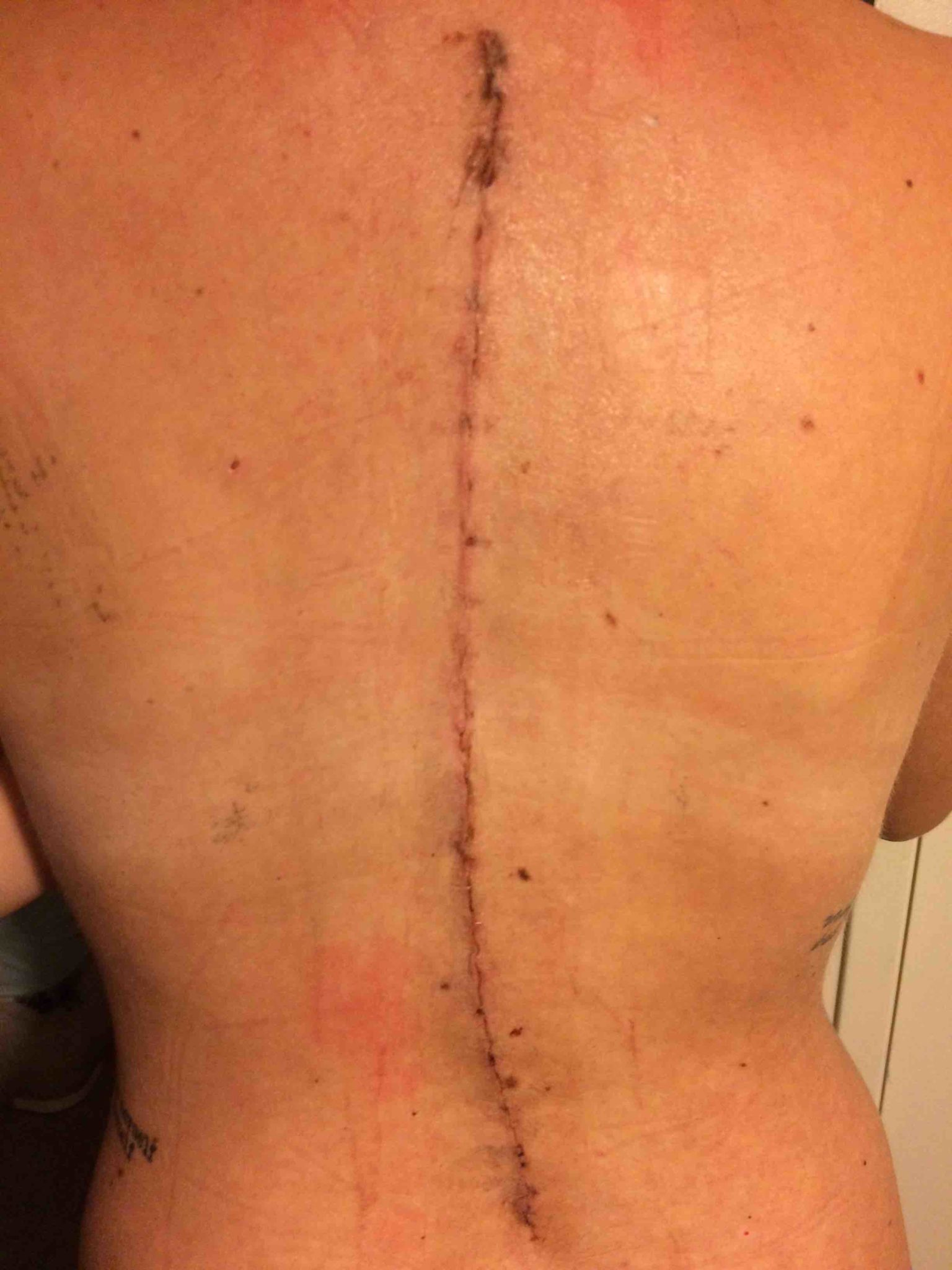Spinal Fusion Surgery in Romania
Search and Compare the Best Clinics and Doctors at the Lowest Prices for Spinal Fusion Surgery in Romania

Find the best clinics for Spinal Fusion Surgery in Romania
No clinics available
Malaysia offers the best prices Worldwide
Price: $ 100

- Home
- Romania
WHY US?
At Medijump, we're making medical easy. You can search, compare, discuss, and book your medical all in one place. We open the door to the best medical providers worldwide, saving you time and energy along the way, and it's all for FREE, no hidden fees, and no price markups guaranteed. So what are you waiting for?

Free

Best Price

Widest Selection

Risk-Free
What you need to know about Spinal Fusion Surgery in Romania

Spinal fusion surgery is a surgical procedure to connect two or more vertebrae in your spine so that they can heal into a single bone. The goal of the procedure is to correct problems within the vertebrae (such as to restore stability to the spine or to eliminate painful motion) as the bones will not move like they used to and keep you from stretching nearby ligaments, nerves, and muscles. The surgery is often recommended for people with back pain caused by degenerative disk disease, scoliosis, fracture, tumors, spine infection, spondylolisthesis, and spinal stenosis.
What does a Spinal Fusion Surgery Procedure Involve?
The procedure is performed under general anesthetic, the surgery begins with an incision in your abdomen (anterior lumbar interbody fusion) or in your back directly over your spine (posterior fusion) to access your spine. Then, your doctor removes the joint or joints between the painful or damaged disks. After that, the vertebrae are fused together permanently and kept from moving pieces of bone from another part of your body or a bone bank (called a bone graft). Screws, rods, or metal plates may be used to help hold the vertebrae together.
How Long Should I Stay in Romania for a Spinal Fusion Surgery Procedure?
You are required to stay in the hospital for two to seven days following your spinal fusion surgery. You should aim to stay in Romania for about eight to ten more days for initial recovery, follow-up checkup, and for the stitches to be removed.
What's the Recovery Time for Spinal Fusion Surgery Procedures in Romania?
Recovery from spinal fusion surgery can take as long as six to twelve months. If your job is not physically demanding, you may be able to get back to work and some of your activities within 3-4 months, but make sure you consult your doctor about your recovery timeline to avoid any complications.
What sort of Aftercare is Required for Spinal Fusion Surgery Procedures in Romania?
For the first six months following the surgery, you need to avoid bending, twisting, and heavy lifting. You will have physical therapy where you will learn how to move, sit, stand, and walk properly. You will also need to attend follow-up appointments after six weeks, six months, a year, or two years following your surgery, but you can do this with your local doctor. After you recover, you will need to maintain a healthy lifestyle, such as having regular exercise and following a healthy diet.
What's the Success Rate of Spinal Fusion Surgery Procedures in Romania?
Spinal fusion surgery is generally safe and effective. Approximately 80% to 95% of people who have spinal fusion are satisfied with the result and about 70% said that their pain is significantly reduced. However, as with any surgery, there are some potential side effects and risks, such as bleeding, blood clots, poor wound healing, infection, injury to nerves or blood vessels in and around the spine, pseudoarthrosis, tissue rejection, and risk from anesthesia.
Are there Alternatives to Spinal Fusion Surgery Procedures in Romania?
There are some alternatives that you can consider, such as artificial disk replacement surgery, Intradiscal Electrothermal Therapy (IDET), and posterior dynamic stabilization. Make sure you discuss with your doctor the best options for you.
What Should You Expect Before and After the Procedure
Before spinal fusion surgery, you may suffer from fractures, instability, or deformities in the spine and you may experience back or neck pain that limits your movement and mobility. After the surgery, the problem in your spine should be treated and any symptoms should be relieved, allowing you to return to your normal life.
Whilst the information presented here has been accurately sourced and verified by a medical professional for its accuracy, it is still advised to consult with your doctor before pursuing a medical treatment at one of the listed medical providers
No Time?
Tell us what you're looking for and we'll reachout to the top clinics all at once
Enquire Now

Popular Procedures in Romania
Prices Start From $3,084

Prices Start From $2,120

Prices Start From $200

Recommended Medical Centers in Romania for procedures similar to Spinal Fusion Surgery

- Interpreter services
- Translation service
- Religious facilities
- Medical records transfer
- Medical travel insurance
- Health insurance coordination
- TV in the room
- Safe in the room
- Phone in the room
- Private rooms for patients available

- Interpreter services
- Translation service
- Religious facilities
- Medical records transfer
- Medical travel insurance
- Health insurance coordination
- TV in the room
- Safe in the room
- Phone in the room
- Private rooms for patients available

- Interpreter services
- Translation service
- Religious facilities
- Medical records transfer
- Medical travel insurance
- Health insurance coordination
- TV in the room
- Safe in the room
- Phone in the room
- Private rooms for patients available

- Interpreter services
- Translation service
- Religious facilities
- Medical records transfer
- Medical travel insurance
- Health insurance coordination
- TV in the room
- Safe in the room
- Phone in the room
- Private rooms for patients available

- Interpreter services
- Translation service
- Religious facilities
- Medical records transfer
- Medical travel insurance
- Health insurance coordination
- TV in the room
- Safe in the room
- Phone in the room
- Private rooms for patients available

- Interpreter services
- Translation service
- Religious facilities
- Medical records transfer
- Medical travel insurance
- Health insurance coordination
- TV in the room
- Safe in the room
- Phone in the room
- Private rooms for patients available

- Interpreter services
- Translation service
- Religious facilities
- Medical records transfer
- Medical travel insurance
- Health insurance coordination
- TV in the room
- Safe in the room
- Phone in the room
- Private rooms for patients available

- Interpreter services
- Translation service
- Religious facilities
- Medical records transfer
- Medical travel insurance
- Health insurance coordination
- TV in the room
- Safe in the room
- Phone in the room
- Private rooms for patients available

- Interpreter services
- Translation service
- Religious facilities
- Medical records transfer
- Medical travel insurance
- Health insurance coordination
- TV in the room
- Safe in the room
- Phone in the room
- Private rooms for patients available

- Interpreter services
- Translation service
- Religious facilities
- Medical records transfer
- Medical travel insurance
- Health insurance coordination
- TV in the room
- Safe in the room
- Phone in the room
- Private rooms for patients available
Spinal Fusion Surgery in and around Romania
Introduction
Situated at the crossroads of Central, Eastern, and Southeastern Europe, Romania is a country of contrasts. From its medieval towns and castles, nature, and wildlife, to its rich cultural heritage and amazing food, this country continues to amaze its visitors. In recent years, Romania has become a flourishing medical tourism destination. Due to its low prices, well-trained medical staff, highly skilled doctors, and amazing medical centers, the country attracts an ever-increasing number of international medical tourists. Dental work is the number one reason medical tourists travel to this country, closely followed by cosmetic surgeries. Most medical tourists come from other European countries, such as the UK, Germany, other Western European countries, and the US.
Popular Cities and Regions in Romania
Almost every city in Romania has its fair share of amazing tourist attractions and skilled specialists. The most popular one is the capital of the country, Bucharest. This dynamic city boasts excellent museums, trendy cafes, and beautiful parks. Tourists usually flock to the Palace of Parliament, the Statue of Emperor Trajan, Cişmigiu Garden, the Romanian Athenaeum, and the Museum of the Romanian Peasant. Besides Bucharest, one of the most popular cities in the country is Brasov which is located in Transylvania; tourists usually come to this city as their base for trips to “Dracula’s castle.” The city is filled with charming medieval streets, great hiking spots, and a beautiful historic center. The second-largest city in Romania, Cluj-Napoca, is also famous for its bohemian cafes, amazing medical centers, and music festivals.
Transport in Romania
Henri Coandă International Airport is the busiest airport in Romania. It serves flights to various major cities in Europe, Africa, and the Middle East. Getting around Romania with domestic flights is fast, but can be expensive. The most common way to travel is by bus and maxi taxi (minibus), which reaches even the smallest towns.
Visas in Romania
While Romania is not yet part of the Schengen Area, the country’s visa policy is based on the Schengen acquis. Therefore, citizens of 62 countries, including the US and Australia, can visit and stay in the country for up to 90 days without a visa. Citizens of other countries will need a visa to enter. Those who already have a Schengen visa may enter the country.
Weather in Romania
Spring from March to May has fairly mild temperatures and pleasant weather. Summer, starting from June to August, is usually dry, sunny and sweltering. Autumn comes in September and ends in November. It brings enjoyable temperatures, but it is also the rainy season in the country. Winter, from December to February, can get quite cold and harsh with frequent snowfall.
Additional Info
- Local Currency: The currency is the Romanian leu (RON). 1 USD is approx. 4.7 RON.
- Money & Payments: ATMs can be found in major cities and smaller towns. Credit cards are widely accepted in restaurants and hotels. Tipping is expected in restaurants, hotels, etc.
- Local Language: There are several spoken languages in Romania. However, Romanian is the most spoken language. English is also spoken by around 31% of the population.
- Local Culture and Religion: Romania is a secular state with no state religion. However, Christianity is the biggest religion. Islam, Paganism, and other religions are also present.
- Public Holidays: New Year’s Day, Descent of the Holy Spirit, National Day, and Christmas Day are some of the most celebrated public holidays.
Popular Searches
- Plastic Surgery in Thailand
- Dental Implants in Thailand
- Hair Transplant in Thailand
- Breast Augmentation Thailand
- Gastric Sleeve in Thailand
- Gender Reassignment Surgery in Thailand
- Laser Hair Removal in Bangkok
- Botox in Bangkok
- Dermatology in Bangkok
- Breast Augmentation in Bangkok
- Coolsculpting in Bangkok
- Veneers in Turkey
- Hair Transplant in Turkey
- Rhinoplasty in Turkey
- Stem Cell Therapy in Mexico
- Rhinoplasty in Mexico
- Liposuction in Mexico
- Coolsculpting in Tijuana
- Rhinoplasty in Korea
- Scar Removal in Korea
- Gastric Sleeve in Turkey
- Bone Marrow Transplant in India
- Invisalign in Malaysia
- Plastic Surgery in the Dominican Republic
- Tummy Tuck in the Dominican Republic
- Plastic and Cosmetic Surgery in Poland
- Rhinoplasty in Poland
- Hair Implant in Poland
- Dental Implants in Poland
- IVF in Turkey